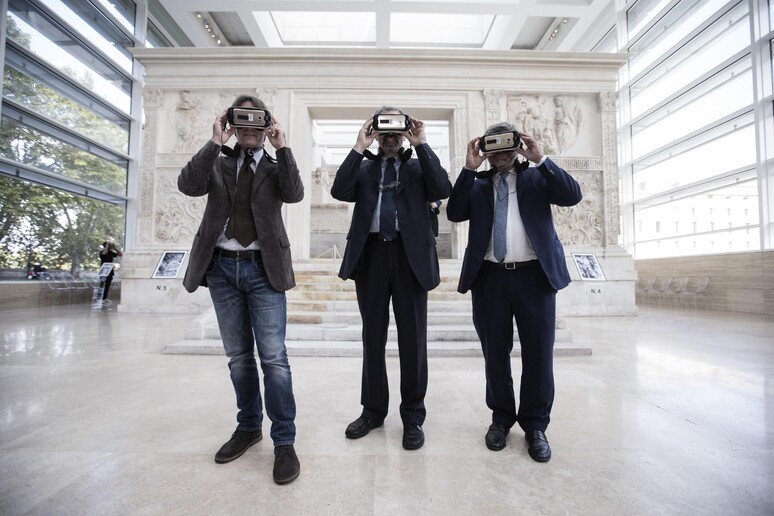The Ara Pacis, an altar built
between 13 and 9 BC to celebrate the peace achieved by Augustus
across the Roman Empire, will starting on October 14 include an
immersive tour throughout the Rome museum housing it.
Visors will enable visitors to take part in a multimedia
narration enabling better understanding of what the monument
originally looked like and observe the transformations of the
area of the capital that Augustus chose to celebrate his power.
The 45-minute tour will be open to the public from 8 PM to
midnight on Friday and Saturday from October 14 until April 15
and every evening from spring until autumn and during holidays.
Scenes will include a virtual re-enactment of a holy rite
that required the innards of an immolated victim to be
interpreted and then offered to the gods. Visitors will be able
to watch as the altar underwent transformations and eventually
ended up under layers of earth on which medieval and Renaissance
Rome were built.
The altar will also be shown in the bright colours in which
it was originally decorated.
The project aims to be entirely self-financed.
"An initial investment of 250,000 euros will have to be
amortized over the next three years," said Albino Ruberti, head
of the Zètema project, "and management costs of about 240,000
euros per year will have to be covered by visitors."
ALL RIGHTS RESERVED © Copyright ANSA











